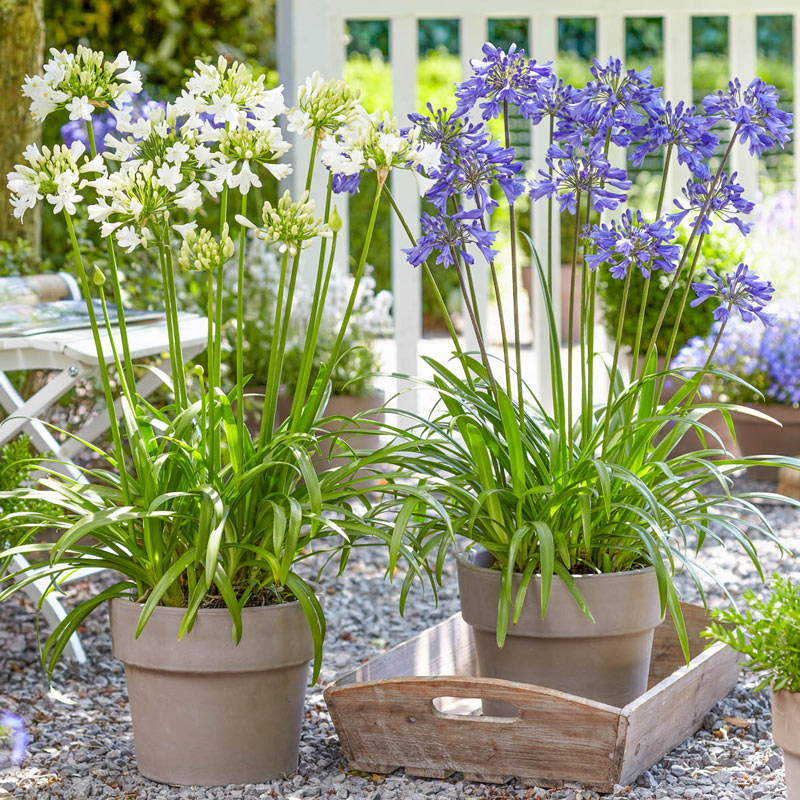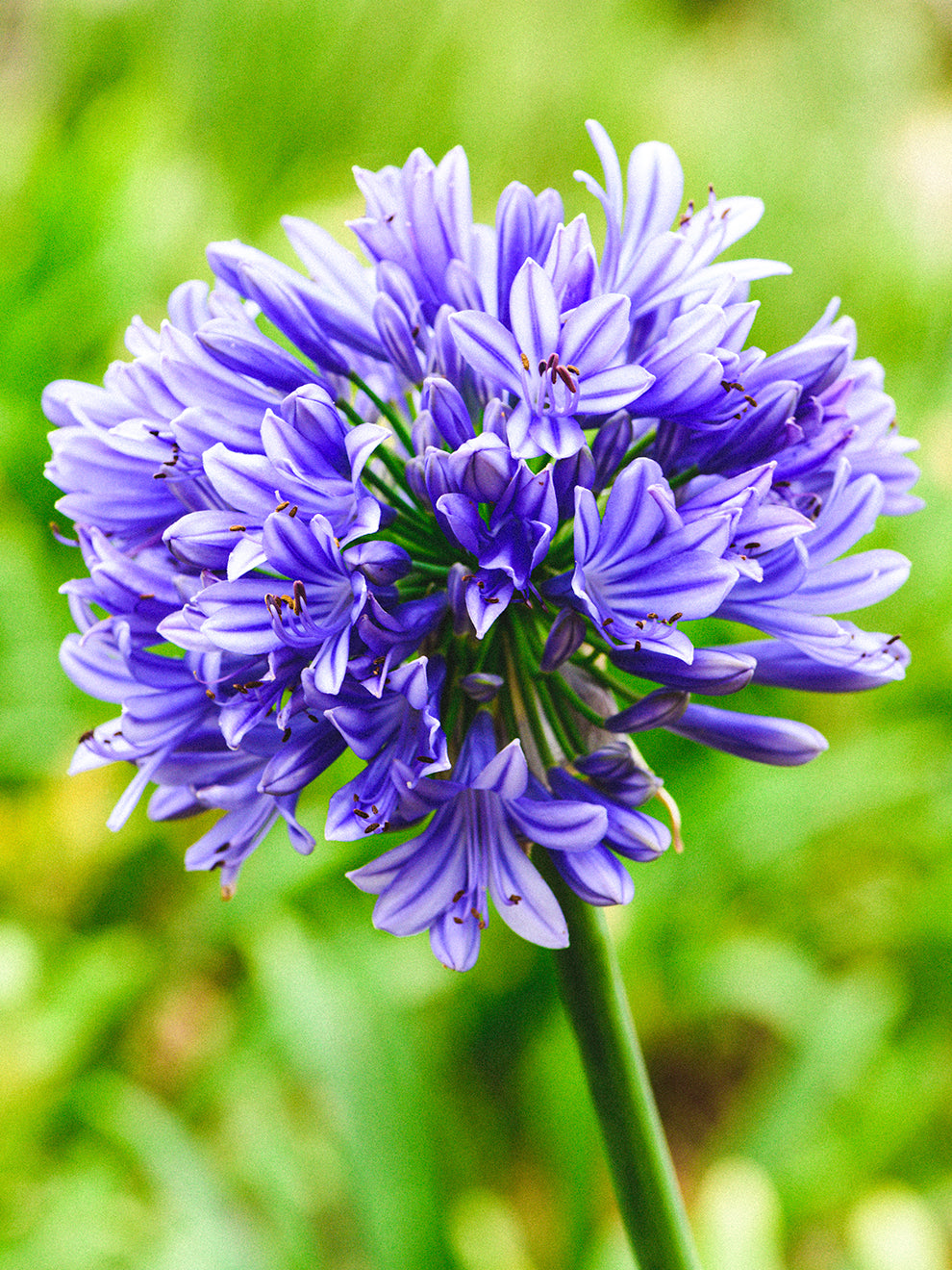Agapanthus Care Tips for Lush and Vibrant Flowers
Agapanthus Care Tips for Lush and Vibrant Flowers
Blog Article
Letting Loose the Secret to Successful Agapanthus Growing: Idea for a Flourishing Garden
In the realm of gardening, growing agapanthus successfully requires a critical approach that encompasses various aspects of plant care. With cautious attention to information, one can unlock the tricks to nurturing these sensational blossoms, bring about a garden that thrives with charm and vibrancy. By comprehending the nuances of agapanthus farming, one can produce an environment where these plants thrive and bloom generously. In the complying with conversation, we will certainly discover essential ideas and methods that will guide you in the direction of a flourishing agapanthus garden, supplying understandings right into best methods, soil conditions, sprinkling methods, and extra.
Planting Agapanthus: Finest Practices
When planting Agapanthus, appropriate soil prep work is vital for ensuring effective development and growth of these gorgeous flowers. Agapanthus, frequently called Lily of the Nile or African lily, thrives in well-draining dirt with a somewhat acidic to neutral pH level - Agapanthus. Before growing, it is important to modify hefty clay soils with natural issue such as garden compost or peat moss to improve drain and provide vital nutrients for the plants
To plant Agapanthus, pick an area that obtains complete sunshine to partial color, as this will promote healthy and balanced growth and bountiful flowering. Dig an opening two times the size of the plant's root sphere and place the Agapanthus at the same deepness it was formerly growing. Carefully backfill the hole with soil, weighing down securely to get rid of any kind of air pockets around the origins.
Water the recently planted Agapanthus thoroughly and remain to keep the soil uniformly wet, particularly during the plant's energetic expanding season. Agapanthus. Applying a well balanced fertilizer once a month can better sustain the plant's development and flowering. By complying with these finest practices for planting Agapanthus, you can develop a stunning display of these captivating blossoms in your yard
Suitable Dirt Issues for Agapanthus
For optimal growth and blooming success of Agapanthus plants, making certain the dirt conditions are excellent is critical. Agapanthus flourishes in well-draining dirt with a somewhat acidic to neutral pH level varying from 6.0 to 7.0. This kind of soil allows for appropriate water drain, protecting against waterlogging which can cause root rot. To enhance soil water drainage, think about adding raw material such as garden compost or peat moss when preparing the planting site. Additionally, Agapanthus prefers dirt that is abundant in nutrients, so incorporating a well balanced plant food throughout the growing period can promote healthy development and dynamic blossoms.

Watering and Fertilizing Tips
To ensure healthy and balanced development and lively flowers, correct watering and feeding techniques are vital for successful Agapanthus cultivation. Agapanthus plants profit from routine watering, especially throughout the expanding season. It is suggested to water deeply once a week, making sure the dirt is wet yet not soaked. During heat or in pots, even more constant watering might be essential to avoid the soil from drying out totally.
When it comes to fertilizing Agapanthus, a well balanced plant food with equivalent components nitrogen, phosphorus, and potassium can be used in the springtime to promote healthy development and blooming. Slow-release fertilizers are suitable for providing nutrients slowly over an extended duration. Prevent over-fertilizing, as this can result in too much foliage development at the expenditure of blooms.
Additionally, including natural issue like garden compost right into the dirt index can enhance nutrient degrees and enhance soil framework, aiding in the general health of the Agapanthus plants. By following these watering and feeding ideas, garden enthusiasts can guarantee their Agapanthus plants prosper and generate magnificent display screens of flowers.
Pruning and Deadheading Strategies
Proper pruning and deadheading techniques play an important function in preserving the health and wellness and aesthetics of Agapanthus plants, matching the necessary practices of watering and feeding for effective farming. Pruning Agapanthus involves removing spent blossom heads, dead or yellowing fallen leaves, and total shaping of the plant to promote far better development. Deadheading, the process of getting rid of discolored flowers, not only boosts the plant's appearance however additionally encourages further flowering.
When deadheading Agapanthus, it is recommended to trim off the flower stem at the base making use of sharp, clean shears. This procedure redirects the plant's energy from seed production back into root and vegetation growth, promoting a much healthier and a lot more robust plant. Regular deadheading can expand the growing duration of Agapanthus and stop self-seeding, which can cause congestion.
In regards to trimming, Agapanthus normally gain from a light trim after blossoming to clean up the plant and motivate fresh growth. Reducing the invested blossom stems and removing any type click this of dead or Get More Info damaged foliage assists keep the plant's vitality and general look. However, it is vital to avoid reducing right into the crown of the plant, as this can compromise its wellness.

Protecting Agapanthus From Pests and Diseases
Carrying out effective parasite and disease monitoring strategies is crucial to protecting the wellness and vitality of Agapanthus plants in cultivation. One usual insect that impacts Agapanthus is the Agapanthus borer, a caterpillar that tunnels right into the plant, triggering damage to the fallen leaves and flowers.
In addition to pests, Agapanthus are susceptible to conditions such as origin rot and fungal fallen leave spots. By staying watchful and attending to insect and illness issues immediately, garden enthusiasts can aid their Agapanthus flourish and flourish.

Conclusion
To conclude, successful cultivation of agapanthus requires correct growing strategies, optimal soil problems, ample watering and fertilizing, routine trimming and deadheading, and defense from insects and illness. By adhering to these tricks and pointers, gardeners can make sure a prospering garden loaded with lovely agapanthus blossoms. Agapanthus. Bear in mind to preserve consistent care and focus to detail to promote the health and wellness and long life of these stunning plants
When planting Agapanthus, appropriate soil prep work is crucial for ensuring successful development and development of these attractive flowers.Water the recently planted Agapanthus extensively and continue to keep the dirt equally damp, specifically during the plant's energetic expanding period.For optimal development and growing success of Agapanthus plants, guaranteeing the soil problems are suitable is important. When transplanting or planting Agapanthus, guarantee the dirt is well-prepared to give the needed structure for the plants to develop themselves efficiently. One usual bug that impacts Agapanthus is the Agapanthus borer, a caterpillar that tunnels right into the plant, creating damages to the blossoms and leaves.
Report this page